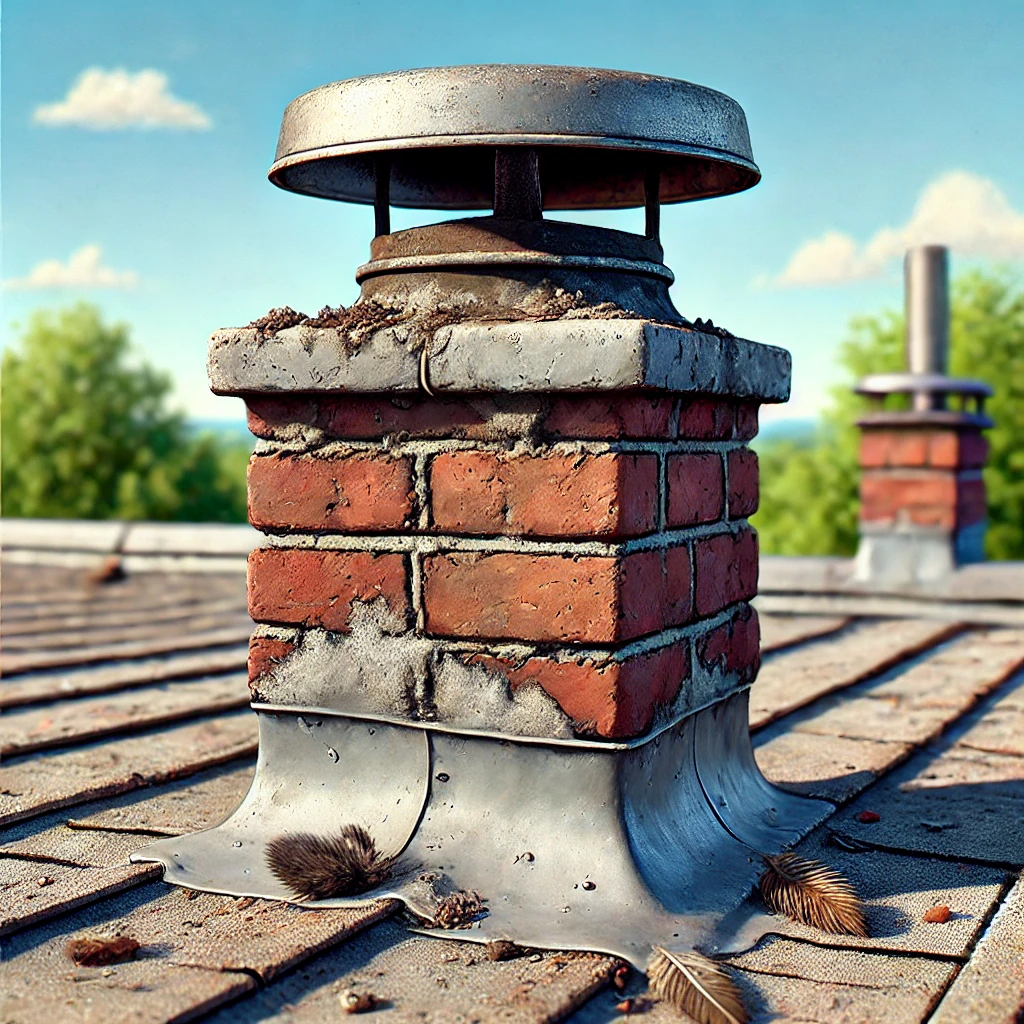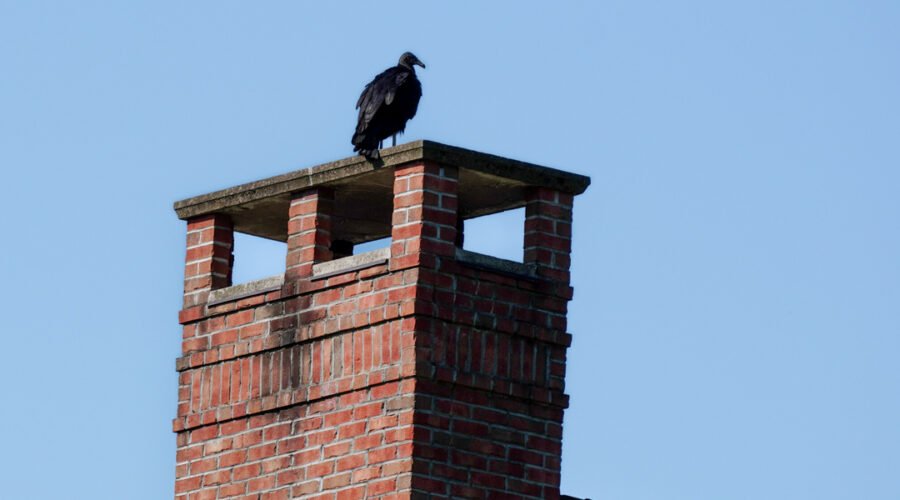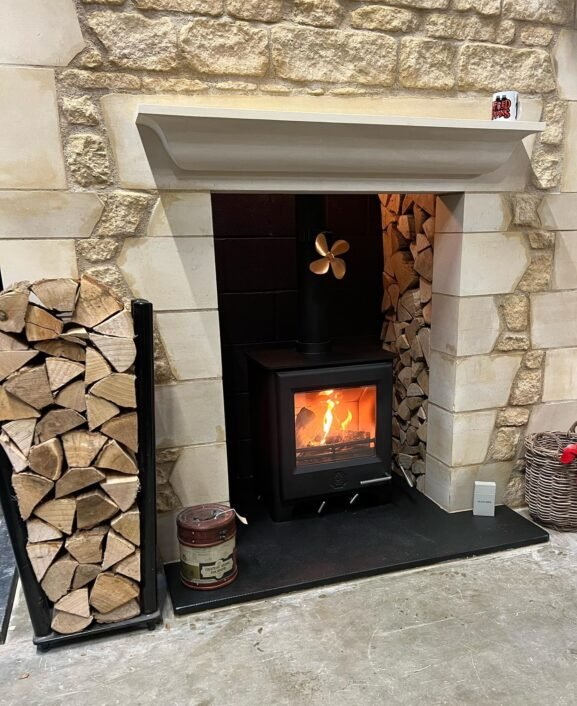Poorly Sized Chimney Caps Allowing Animal Entry: Protect Your Home Today
Imagine settling in for a cozy evening only to hear strange noises from your chimney. It’s not just the wind—wildlife that’s found its way inside. Poorly sized chimney caps are more than a small mistake. It can let animals in. Animals look for warmth and shelter. Your chimney could become their home.
Our homes should be sanctuaries, yet a misplaced chimney cap can turn them into havens for critters. This issue doesn’t just pose a nuisance; it can lead to significant damage and health risks. In this text, we’ll discuss how poorly fitted chimney caps can let animals inside and discuss steps we can take to protect our homes. By understanding the problem, we can protect our living spaces and maintain peace of mind.
The Ultimate Guide to Chimney Caps: What They Do and Why You Need One
Chimney caps are important for keeping unwanted animals out of your chimney. They are more than just decorative. Animals can easily get inside if your chimney cap is the wrong size. A cap that is too large is a good idea. But it makes it easier for wildlife to get in. Our mission is to prevent the creation of cozy nests by ensuring the correct chimney cap fits.
Why a Chimney Cap Matters:
- Pest Prevention: A well-fitted cap blocks entry points. It stops birds and raccoons from getting inside.
Protection from Elements: The cap keeps rain and snow out, helping protect your expensive masonry from damage. According to the National Fire Protection Association, moisture can cause serious damage. - Enhanced Safety: Prevent sparks and embers from flying out, ensuring safer homes.
Chimney Cap Essentials:
Getting the right cap requires professional chimney cap installation skills. It’s not a DIY gig; calling experts saves hassle. Reach out to professionals for consultation.
Weather can be harsh, making wildlife-proofing chimneys essential. If you notice any damage to your chimney cap, replace it immediately. Also, if the cap is too small or doesn’t fit properly, it’s time for a new one. This will help prevent future problems and keep your home safe. Reliable protection keeps your living space secure and delightful.
Are you exploring options for chimney maintenance? Visit the Chimney Safety Institute of America for helpful insights. For peace of mind, leave the heavy lifting to us.
Consequences of Poorly Sized Chimney Caps
Chimney caps play a crucial role in keeping wildlife out. When caps aren’t fitted properly, animals can find an easy entry, leading to several issues.
Animal Entry: A Common Problem
If your chimney cap is the wrong size, animals like birds and raccoons could find their way in. This can lead to unexpected visitors to your home. Animal entry isn’t just annoying. It can also bring health risks. Animals might carry diseases or parasites. Watching a bird or raccoon peep out of your chimney might be cute, but cleaning up after them? Not so much. These critters can make a lot of noise. It might keep you up at night. They can also block airflow if they decide to build a nest. Installing a well-fitting cap helps keep them away. It makes them look for a different place to stay.
If you think your chimney needs inspection, reach out to professionals for consultation. Remember, no DIYs; leave it to the experts. For professional guidance, check out the National Chimney Sweep Guild for more chimney safety information.
Damage to the Chimney Structure
Over time, animals aren’t the only concern when the chimney cap is oversized. Structural damage becomes more likely as weather elements sneak in through gaps. Water can cause serious damage. It can erode masonry and rust metal parts, leading to expensive repairs. The moisture can freeze and expand. When caps don’t fit tightly, it makes the problem worse. Loose-fitting caps may also allow sparks to escape, posing fire hazards.
To avoid these issues, check your chimney cap and consider a replacement if it’s out of size. Learn more about fire safety from the Chimney Safety Institute of America. Reach out to professionals for consultation. We’re here to ensure your chimney remains both wildlife-proof and structurally sound.
Identifying a Poorly Sized Chimney Cap

Finding a needle in a haystack might feel like finding a needle, but spotting a poorly sized chimney cap is important. A proper chimney cap can help stop animals from getting inside. Let’s go over how to spot problems with your chimney cap. This will help you keep pests out of your chimney.
Signs of Animal Presence
Imagine hearing strange noises from the chimney—but don’t worry, it’s not Santa trying to make an early visit. Animals often find comfort in nesting in chimneys with oversized chimney caps. Here’s how to recognize they’ve moved in:
- Scratching Sounds: Persistent noises might suggest animals nesting in chimneys.
- Feathers or fur around the fireplace could mean there are unwanted visitors.
Bad odors may stick around if an animal is trapped or has gotten inside. This could lead to health risks.
If you notice any of these signs, it’s time to reach out to professionals for consultation.
Also, consider securing the top of your chimney to prevent animals from entering.
Visual Inspection Tips
A visual inspection is essential before those wildlife parties start in your chimney. Here’s what to look for:
- Gaps or Misalignment: Check if the cap fits snugly on the chimney. Any gaps could spell trouble, especially in areas with tough winters.
- Rust or Damage: Inspect the cap for visible damages. Rust can weaken it, making it easy for critters to get through.
- Loose Debris: If you find pieces of chimney or cap material on the ground, it could indicate an improperly sized chimney cap.
Preventing Animal Entry
Stop animals from setting up shop in your chimney by taking preventative steps. We’ll help you choose the right size. We’ll also show you how to add extra protection to keep critters away.
Choosing the Right Size
Selecting the correct chimney cap size is crucial to effectively wildlife-proofing chimneys. An oversized chimney cap might seem like a good idea, but it can invite unwanted guests, like squirrels or birds. A properly fitting chimney cap is important. It ensures a snug fit that keeps animals out. It also allows smoke and gases to escape safely.
- Measure Accurately: Take precise measurements of your chimney top to avoid improper sizing.
- Consult experts: Professionals can help you choose the right cap size. This will prevent pests from entering your chimney. They know what works best for your home.
- Avoid DIY Mishaps: Improper installation could lead to problems—leave it to the pros.
For tips on choosing the right size, consult the Chimney Safety Institute of America.
Additional Protective Measures
A well-sized cap poses a good start, but additional measures increase chimney security. Consider these options to deter animals from nesting in chimneys further:
- Mesh Screens: Add these to prevent smaller animals from squeezing through.
- Maintenance Routine: Regularly inspect chimney caps for damage or gaps.
- Weather Considerations: Harsh winters increase moisture risks; check caps after storms.
For peace of mind, don’t try DIY solutions. Trust our experts to handle your chimney cap installation and replacement. Reach out to professionals for consultation or visit the National Fire Protection Association for more safety tips
Case Studies and Real-Life Examples
Homeowners have shared real stories about the problems caused by incorrectly sized chimney caps. These stories are easy to relate to and offer helpful lessons. They show why acting quickly and preventing animals from getting into chimneys is important.
Homeowner Experiences
In one case, a family in Newark discovered raccoons nesting in their chimney. An oversized chimney cap created enough space for these animals to slip through. Their restless nights were filled with odd noises and the occasional raccoon stare-off. This incident showed how important it is to fit chimney caps properly. They help prevent pests from getting into chimneys.
Another homeowner in Jersey City discovered that birds had built a nest on their chimney cap. The chimney cap was too small for the job, so it provided a perfect spot for the birds to settle in. The resulting mess and damage led to costly repairs. These birds weren’t paying rent—just leaving feathers and chaos behind. These experiences remind us how important it is to secure chimney tops with the right-sized caps. This helps keep out unwanted critters.
Successful Preventive Strategies
Lucky homeowners have reported success through wildlife-proofing chimneys by implementing preventive strategies. A snugly fitting chimney cap for animal prevention helped one family avoid costly pest control.
- Consult Professionals: Expert chimney cap installation ensures proper sizing and security.
- Add Mesh Screens: These screens block wildlife while allowing smoke to escape.
- Regular Inspections: Regular checks help spot issues before they escalate.
It’s essential to avoid DIY solutions, which often result in DIY disasters. Reach out to professionals for consultation. For additional safety tips, visit the National Fire Protection Association and Chimney Safety Institute of America.
Conclusion
It’s important to fix poorly sized chimney caps to keep our homes safe and healthy. When our chimney caps are the right size, they help stop wildlife from getting into our living spaces, keeping us safe from the risks that come with it. These caps are vital in protecting our homes from pests, moisture, and fire hazards.
Let’s prioritize professional installation and regular inspections to safeguard our homes. By taking these steps, we can feel confident that our chimneys are safe from animals and damage. It’s important to get expert advice, so let’s not be afraid to ask for professional help when needed.
Frequently Asked Questions
Why is a properly sized chimney cap important?
A properly sized chimney cap is important. It stops wildlife from entering your home. It also protects the chimney from moisture damage. The cap helps keep sparks contained, making your home safer. A good cap keeps animals, like birds and raccoons, out. It also prevents water from damaging the masonry. With a proper cap, your chimney works more efficiently.
What problems can poorly sized chimney caps cause?
If your chimney cap is the wrong size, wildlife can get in. This can lead to health risks and damage to your chimney. A poorly fitting cap also lets moisture in. This causes erosion of the masonry and rusting of metal parts. These issues pose serious risks to your home’s integrity and safety.
How can I prevent animals from entering my chimney?
Choose a chimney cap that fits properly to keep animals out of your chimney. Add mesh screens for extra protection. It’s a good idea to consult professionals for the installation. Regular inspections are also important. Be sure to consider environmental factors, especially during harsh winters.
Why should I opt for professional chimney cap installation?
When you choose professional installation, you ensure the cap fits perfectly. This helps protect your chimney from wildlife and weather. Experts can take precise measurements and recommend the best materials. The cap will be installed to improve safety and prevent damage, avoiding the problems that come with DIY installation.
What should I do if I suspect my chimney cap is improperly sized?
If you think your chimney cap is the wrong size, check it for any damage or gaps. If you find any, it might be time to replace it. Contact a professional to assess and install a new one. This will help protect your home from risks and give you peace of mind.
Are there any real-life examples of issues caused by wrong chimney cap sizes?
Yes, homeowners have had problems with raccoons nesting in chimneys. Birds have also caused damage because of improperly sized caps. These issues show how important it is to choose the right cap. The right cap can prevent wildlife from getting in and causing damage.
How often should I inspect my chimney cap?
We recommend inspecting your chimney cap at least once a year, and it’s best to do this before winter. Regular inspections help spot problems early so you can take care of any issues before they worsen. They also help prevent damage from weather or animals.
Where can I find professional help for chimney cap installation?
You can get professional help installing chimney caps by contacting local chimney services. You can also visit the Chimney Safety Institute of America for advice. Many service providers offer free consultations. They can also give you expert tips to help keep your chimney safe and efficient.


